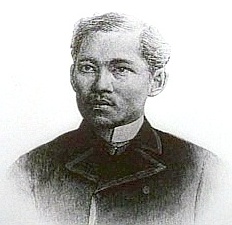December 31
 On this date in 1991, the government of El Salvador and the Frente Farabundo Marti para la Liberación Nacional (FMLN) reached an initial agreement to end one of the worst Latin American conflicts of the 20th century. The El Salvadoran civil war, fueled by billions of dollars in military assistance from the Reagan administration, cut short 70-80,000 lives and resulted in massive human rights abuses, nearly all of which -- as a United Nations Truth Commission later revealed -- were perpetrated by the government, whose armed forces and roving death squads eliminated labor activists, Jesuit priests, American churchwomen, and peasant leaders under the pretense of disabling the rebellion.
On this date in 1991, the government of El Salvador and the Frente Farabundo Marti para la Liberación Nacional (FMLN) reached an initial agreement to end one of the worst Latin American conflicts of the 20th century. The El Salvadoran civil war, fueled by billions of dollars in military assistance from the Reagan administration, cut short 70-80,000 lives and resulted in massive human rights abuses, nearly all of which -- as a United Nations Truth Commission later revealed -- were perpetrated by the government, whose armed forces and roving death squads eliminated labor activists, Jesuit priests, American churchwomen, and peasant leaders under the pretense of disabling the rebellion. ***
 Six years after the preliminary settlement in El Salvador, the Quaker Oats company and the Massachusetts Institute of technology resolved a lawsuit brought by nearly a dozen plaintiffs who -- as residents of the notorious Walter E. Fernald State School for the "feeble-minded" -- were unwittingly fed cereal tainted with radioactive iron from 1946-1953. The Fernald School had been one of the leading eugenic institutions during the 1920s and 1930s, and its legacy included decades of physical and sexual abuse. The cold war radiation study, partially sponsored by the Quaker company (which provided free oats for the Fernald children), was intended to track the body's absorption of nutrients -- data, the company later claimed, that would allow it to market its products more competitively against rivals like Cream of Wheat. The children's parents were told that the study's participants would be joining a "science club." In a letter written to parents in 1953, the directors of the Fernald School explained that
Six years after the preliminary settlement in El Salvador, the Quaker Oats company and the Massachusetts Institute of technology resolved a lawsuit brought by nearly a dozen plaintiffs who -- as residents of the notorious Walter E. Fernald State School for the "feeble-minded" -- were unwittingly fed cereal tainted with radioactive iron from 1946-1953. The Fernald School had been one of the leading eugenic institutions during the 1920s and 1930s, and its legacy included decades of physical and sexual abuse. The cold war radiation study, partially sponsored by the Quaker company (which provided free oats for the Fernald children), was intended to track the body's absorption of nutrients -- data, the company later claimed, that would allow it to market its products more competitively against rivals like Cream of Wheat. The children's parents were told that the study's participants would be joining a "science club." In a letter written to parents in 1953, the directors of the Fernald School explained that In previous years we have done some examinations in connection with the nutritional department of the Massachusetts Institute of Technology, with the purposes of helping to improve the nutrition of our children and to help them in general more efficiently than before.The fact that these developmentally disabled children were being exposed to radioactive isotopes was not, obviously, mentioned. Although the doses of radiation were not likely to have caused any medical harm, the experiment's protocols were grossly unethical, as the Department of Energy made clear in 1994 when it released a 1000-page history of the United States' Cold War-era radiation experiments.
For the checking up of the children, we occasionally need to take some blood samples, which are then analyzed. The blood samples are taken after one test meal which consists of a special breakfast meal containing a certain amount of calcium. We have asked for volunteers to give a sample of blood once a month for three months, and your son has agreed to volunteer because the boys who belong to the Science Club have many additional privileges. They get a quart of milk daily during that time, and are taken to a baseball game, to the beach and to some outside dinners and they enjoy it greatly.
I hope that you have no objection that your son is voluntarily participating in this study. The first study will start on Monday, June 8th, and if you have not expressed any objections we will assume that your son may participate.
On 31 December 1997, Quaker Oats and MIT agreed to pay $1.85 million to the surviving participants. The Fernald School, which was converted into an adult facility during the 1970s, is scheduled to close its doors forever in the new year of 2007.
photograph by John Hoagland



